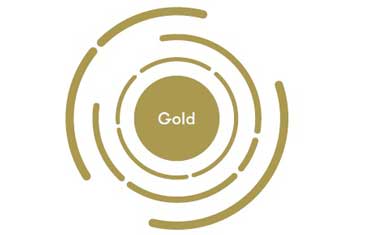NCCPE Engage Watermark: The Process We Followed

Written by Charlotte Thorley, former Public Engagement Manager at Queen Mary University of London (QMUL), currently working as a freelance public engagement and involvement specialist and Kimberley Freeman, current Public Engagement Manager for the QMUL Centre for Public Engagement
This week Queen Mary University of London (QMUL) became the first university to be awarded the Engage Watermark by the National Co-ordinating Centre for Public Engagement (NCCPE).
Announced at the 2016 Engage conference, this award serves to recognise QMUL for its achievements so far in embedding a supportive culture of engagement, and as such I am delighted that QMUL was awarded Gold status, showing just how far it has come on its public engagement journey.
But there is still a way to go; the process of achieving the award is detailed and reflexive, including significant planning for the future as well as reflecting on what has already been done.
For anyone thinking of applying for the award, here’s a quick run through of what the application process looked like for QMUL.
Application form
The process of the Watermark starts with a significant piece of work on behalf of the applying institution. The application form provides an opportunity to do a stock-take on the culture and activities of the organisation, and to evidence the progress made to date.
QMUL’s form included information on promotions criteria and other HR processes, marketing and communications information, grant application processes, details of Centre for Public Engagement (CPE) activity and surveys and evaluations carried out by the CPE as well as data already submitted to HESA and RCUK for the HEBCI survey and RCUK for their review of the Concordat for public engagement. Importantly this work was all underpinned by QMUL strategies and supporting processes, such as documents from the annual planning rounds.
Whilst it was a lot of work, this paid off a month after submission when QMUL was asked by RCUK to make a submission for the Research Quality Assurance process; some very familiar questions were asked about public engagement, and the data collected for the Watermark could be easily reused.
One piece of advice: this report needs input from many departments, but really needs one central author to bring it all together. Planning time for this is essential!
All-staff Survey
Managed through the NCCPE’s website, a survey was distributed to all staff, including professional services and post-graduate students.
Working with the NCCPE we tailored elements of the questions for the QMUL context, referring to staffing and research structures in the language used at Queen Mary to make it as easy to complete as possible. This was emailed to staff through all-staff bulletins, faculty and departmental level mail-outs, through a special message from Principal Simon Gaskell, and through the mailing list of the QMUL CPE, to maximise reach.
Partners Survey
Again managed through the NCCPE’s website, a complementary survey was sent out to a list of QMUL community partners. The list was selected based on the depth of their relationship with QMUL, to ensure that the survey didn’t strain new or delicate relationships, and partners who didn’t have their own relationship with the CPE were only approached through their QMUL contact.
Interviews
The NCCPE carried out a series of interviews with staff, students and community partners to develop a deeper understanding of the responses from the surveys.
The CPE arranged a day of face-to-face opportunities with the Senior Management Team, a selection of community partners, and a group of early-career researchers, all chosen to reflect work across QMUL’s three faculties. Additional phone and skype interviews enabled input from Heads of Department, and from a range of Professional Services colleagues.
Feedback from NCCPE and Looking Ahead
The NCCPE took the application form and all the supporting data and returned to QMUL a little while later with a detailed document looking at the strengths and weaknesses of support for public engagement across the institution.
The CPE used the Watermarking process as an opportunity to update QMUL’s strategy for public engagement, and so a new strategy is being developed through university-wide consultation and informed by feedback from the NCCPE's report.
This final stage is an important part of the process; the Watermark is not awarded on work done alone, but also acknowledging the direction of travel an institution is taking. A series of challenging but achievable actions and coherent strategic vision are the final stage of ensuring that the culture of engagement will continue to thrive.
What Next?
So there you have it. The whole process took about 6 months, with the QMUL input being heaviest towards the beginning. QMUL has been awarded a Gold Watermark to reflect the not only the excellent work to date, but also the commitment to doing more. The process is designed to be reviewed after 3 years, and no doubt things will have changed a lot both externally and within QMUL. I look forward to seeing what they achieve!
Written by:
Dr Charlotte Thorley
Freelance public engagement and involvement specialist
@cprthorley
Kimberley Freeman
Executive Officer for Public Engagement and Public Engagement Manager
Centre for Public Engagement